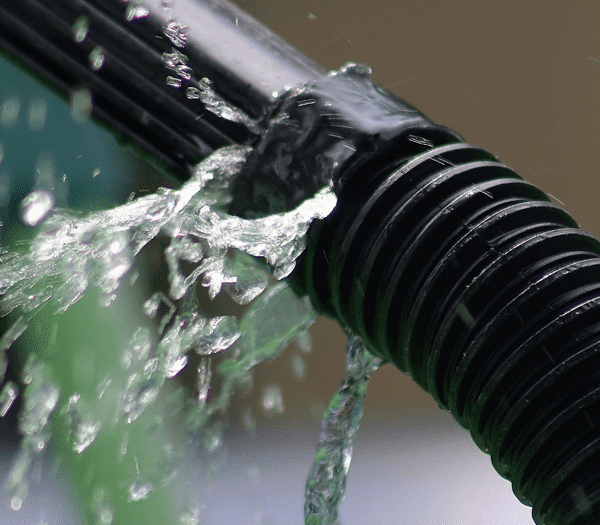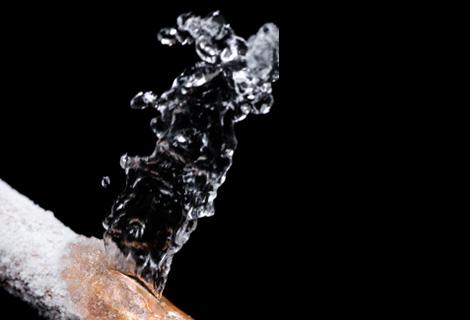Stop the Flood: Techniques for Detecting as well as Repairing Burst Pipes
Stop the Flood: Techniques for Detecting as well as Repairing Burst Pipes
Blog Article
Almost everyone may have their private rationale involving How to Install and Connect a New Dishwasher.

A burst pipe is a significant emergency; you can just stand as you view water you pay dearly to rejoin with the earth. In worse instances, you observe a pool on your cooking area floor, which is a great journey danger, especially if you have youngsters around. If the pipe that ruptured remained in your walls, trouble: you may require to repaint that whole area.
How can a tragedy like a burst pipe be stopped and taken care of? Well, by listening to your professional emergency plumbing technicians and adhering to these guidelines.
How do I understand when my pipes have ruptured?
Varying water pressures
Pipelines do not just burst in a day. You might have observed that your kitchen tap or shower doesn't run promptly when you turn the tap. It might pause for a couple of seconds and afterwards blast you with more pressure than normal.
In other circumstances, the water may appear typical at first, after that drop in stress after a couple of seconds.
Damp walls as well as water stains
Prior to a pipe ruptureds, it will leakage, many times. If this relentless leaking goes undetected, the leak might graduate right into a broad gash in your pipeline. One easy method to avoid this emergency is to watch out for damp walls advertisement water stains. These water spots will lead you right to the leak.
Puddles under pipelines and sinks
When a pipeline bursts, the discharge creates a puddle. It might appear that the pool is expanding in size, and also no matter the amount of times you mop the puddle, in a couple of minutes, there's one more one waiting to be cleansed. Typically, you might not be able to trace the pool to any visible pipelines. This is a sign to call an expert plumber.
Untraceable trickling noises
Pipeline ruptureds can happen in one of the most undesirable places, like within concrete, inside wall surfaces, or under sinks. When your house goes silent, you may have the ability to listen to an irritatingly consistent trickling noise. Even after you have actually examined your shower head and kitchen area faucet, the dripping may proceed.
Beloved reader, the dripping might be originating from a pipeline inside your walls. There isn't much you can do regarding that, other than inform an expert plumber.
Shut off the Water
When water ices up, it increases in quantity by about 9 percent. As well as it broadens with significant force: The stress inside pipes may go from 40 extra pounds per square inch to 40,000 psi! No pipeline can hold that much pressure, so it breaks open. The break might take place where the ice forms, however regularly, it takes place where water pressure discovers a weak point in the pipeline. That may be inches and even feet from the icy location. Find the water shutoff valve as well as shut off the water to stop more damage. You may additionally require to shut off the electrical power as well, depending on where the leaks happens and also just how big it is.
Contaminated water
Lots of people presume a ruptured pipeline is a one-way electrical outlet. Quite the contrary. As water flows out of the hole or laceration in your plumbing system, pollutants locate their method.
Your water might be contaminated from the source, so if you can, check if your water storage tank has any type of issues. Nonetheless, if your alcohol consumption water is supplied as well as cleansed by the local government, you must call your plumber right away if you see or smell anything funny in your water.
What do I do when I find a burst pipe?
Your water meter will remain to run also while your water wastes. To lessen your losses, discover the primary controls as well as turn the supply off. The water mains are an above-ground framework beside your building.
How to Fix & Detect a Leaking Pipe
How Do I Know if a Pipe is Leaking?
Leak detection tests can help you determine if your pipe has a leak. Even if you don’t see an apparent leak, you should still conduct leak detection tests regularly to save water and money—and prevent major damage to your home.
Water meter. It can be helpful to figure out what your usual water meter usage numbers are and then monitor them regularly. To monitor your meter, first, turn off all water faucets in your home. Check the meter and write down the numbers. In a few hours, check the meter again. If the numbers have changed, you have a leak. Water gauge. Use a water gauge to test your water pressure. Your showerhead should produce a certain amount of water pressure based on its model and design. If the pressure is lower than it is supposed to be for that specific showerhead, your home likely has a leak. Puddles. Look inside your bathroom, laundry, and kitchen sink cabinets. Puddles around the cabinets or around toilets, tubs, showers, and washing machines indicate the presence of a leaking pipe. You may also notice loose tiles, peeling or flaking paint, or mold caused by water accumulation. Napkin test. Even if you don’t see any puddles, you may still have a leak. You can test for water leaks in the bathroom, laundry, and kitchen by wiping below-sink connections with a napkin, paper towel, or piece of toilet paper. If it becomes damp, you probably have a leaking pipe under the sink. Discolored walls. Walls that are discolored—usually with brown or yellow stains—or bulging might mean that they have been impacted by water damage caused by a leaking pipe. Smell. A leaky pipe will create sitting water, and over time, that water may develop a musty smell. If your home smells musty, but you can’t locate the source, it may be due to a leak. Steps for Fixing a Leaking Pipe
A leaky drain can be remedied by tightening the pipe base, replacing the drain seal, caulking the rim, and tightening the pipe nut. Similarly, a leaking toilet pipe can be treated by tightening the packing nut. You may also need to replace the valve. A leaky faucet may just need tightening or replacement of the washers. If that doesn’t work, consider replacing your faucet. If your pipe has a hole in it, you may want to use a pipe leak sealer or pipe leak tape. This quick fix for water pipe leaks can also temporarily fix a copper pipe leak. https://www.ahs.com/home-matters/quick-tips/how-to-tell-if-pipes-are-leaking/

I came across that blog entry on How to install a dishwasher safely while browsing on the web. Sharing is good. One never knows, you might be doing someone a favor. Thank you so much for going through it.
Here
Report this page